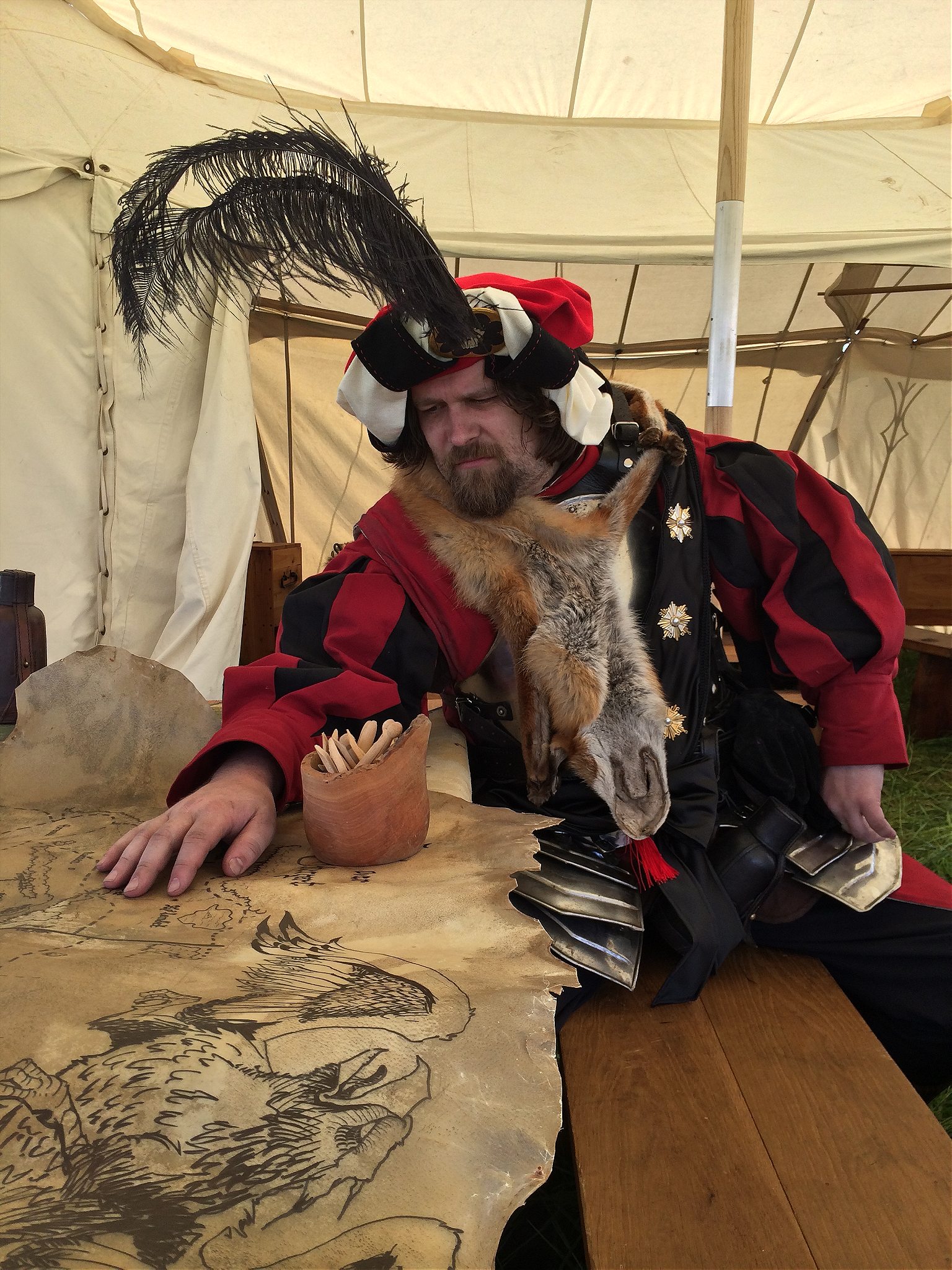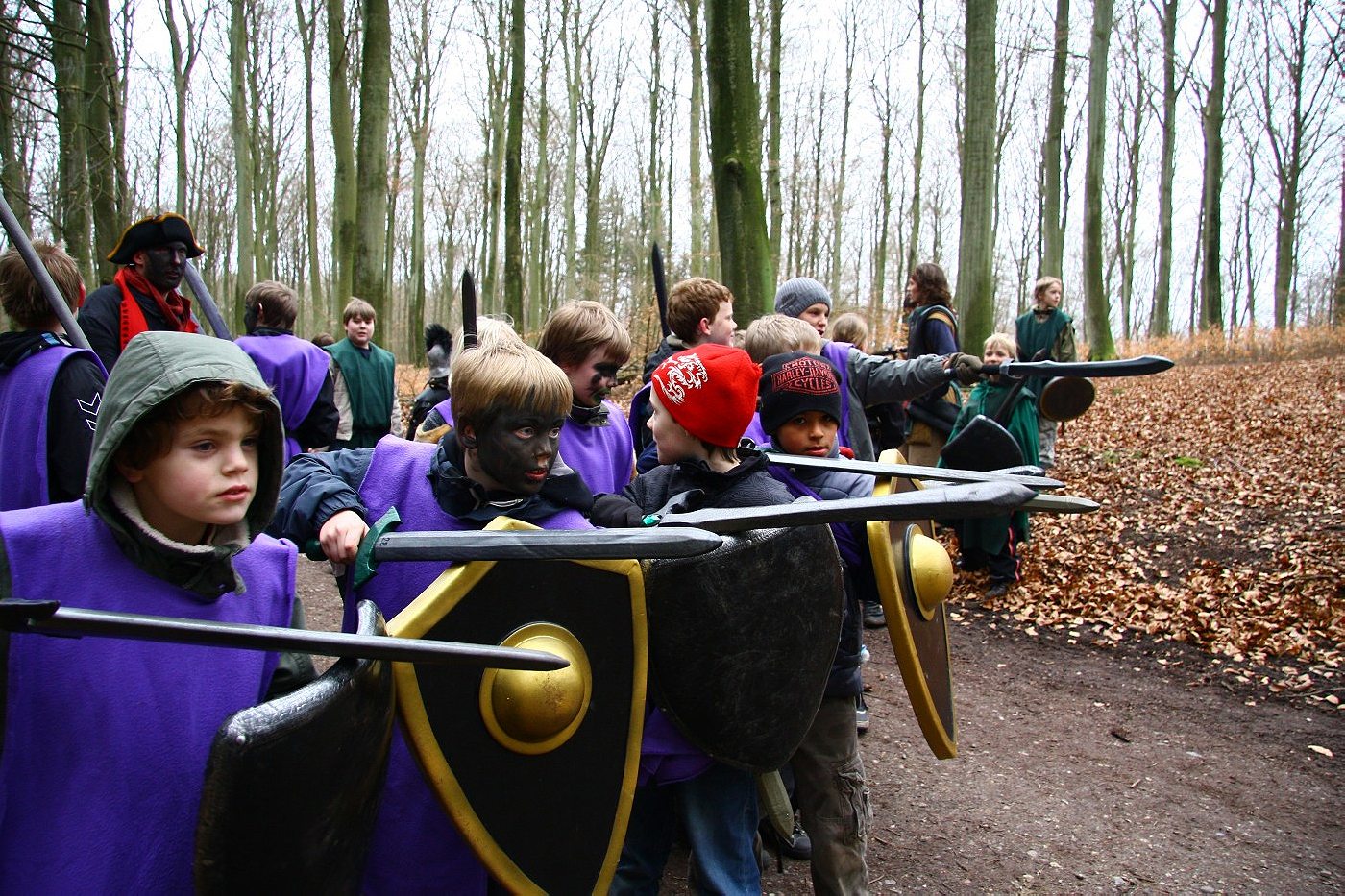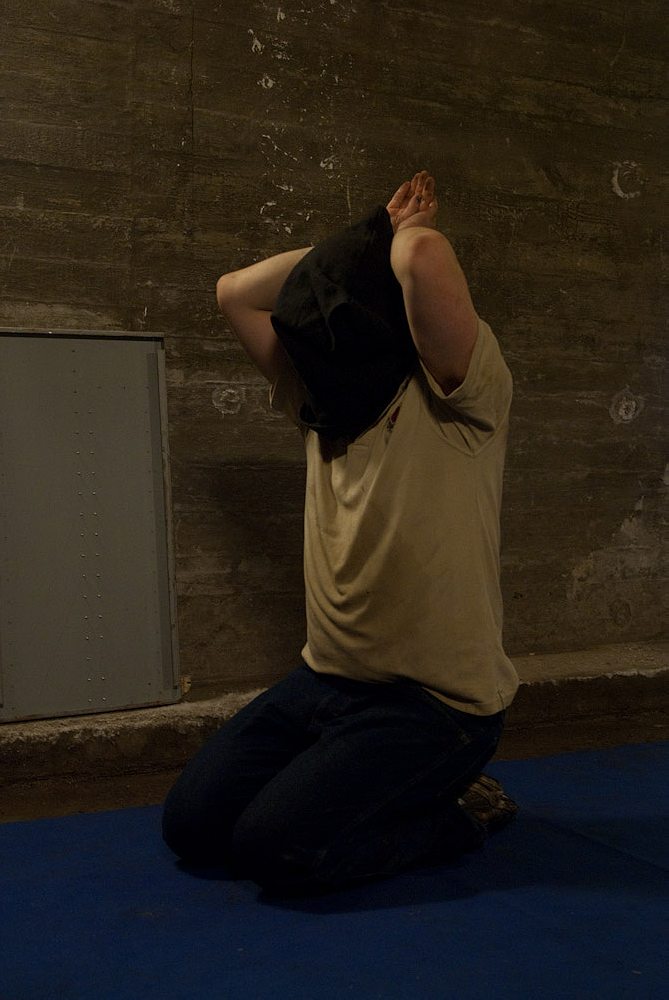At the most influential Live Action Role-Playing gathering of its kind, the weirdest thing isn’t wizards or witches—it’s new-found fame.
Live Action Role-Playing has a way of sinking its (metaphorical) claws into you. Consider American journalist Lizzie Stark, who in 2011 visited the Knudepunkt conference in Denmark, the most influential larp gathering of its kind. There, she climbed into the rabbit hole and never came out. I know, because I gave her a hug not two hours ago at this year’s conference. She’s still a journalist, and recently published a stunning book on breast cancer, but she’s also an avid larper and game designer in her own right.
“Discovering the Nordic scene felt like reading James Joyce or Gertrude Stein after spending a lifetime on fairy tales,” she wrote in her 2012 book about larping, Leaving Mundania. What would turn a critical American journalist into a die-hard larper? Good question, but let’s step back a bit here. Larp is organized pretend play. During a larp, participants dress up as characters and leave their normal lives behind for a while. A larp can be about cowboys in 1886, witches and wizards at a magical college, or an advertising agency from hell. Instead of watching or listening, you’re an active part of the experience. It’s like stepping into a TV show or novel. Or kids playing. Both descriptions are accurate.

Nordic larp, the type that gets the most press, and the one in which I participate, evolved out of the scenes in Denmark, Sweden, Norway, and Finland (but not Iceland, the other Nordic country). Not only does some of the most outrageous and mind-blowing stuff happen there (want to play soulless ad execs or tortured prisoner for fun? Nordic larp is for you), the Nordic larp movement has also spawned the world’s most celebrated larp conference. It’s called Knudepunkt (“Nodal Point”) and has taken place annually since 1997. It’s a 100 percent volunteer-driven event, where larp enthusiasts of all stripes come together to discuss, play, and party.
The event has slowly grown from around a hundred participants from the four Nordic countries (sorry, Iceland) to almost 600 this year from almost 30 different countries. It’s a magical playground like no other, where devoted hobbyists and academics stay up late at night to rant about subjects like realistic characters, psychological safety, and techniques to simulate rape.
Simulated rape? Really? Yeah. I started out larping for shits and giggles, and while I still do that, I sometimes also larp for more serious purposes these days. I’ve played a prisoner in a not-that-long-after-tomorrow prison and have been tortured using genuine Gitmo techniques. I’ve been a jealous husband in an 1829 Jane Austen romantic comedy. And I’ve played a heartless peacekeeping soldier, who couldn’t care less about the locals. Not all of this has been “fun,” but all have been experiences I treasure and which have helped form me.

Maybe that’s why I love this hobby, and especially this conference, so much. At one moment, I’ll be at a lecture where a Finnish Ph.D. in Game Studies is earnestly telling us all why we need to rethink our definition of “games,” and at the next moment, I’ll be knee-deep in a Russian presentation about larps in the 90’s, and hear a story of how some deranged madman thought he was actually the “Son of Sauron”—yeah, that Sauron, the bad guy from Lord of the Rings. I know, Sauron wasn’t big on sons, but this guy wasn’t big on reason, either.
I was 13 when I started larping. My friend Jeppe and I used a bizarre-looking club as a shared weapon, and our costumes were bed sheets with a hole cut out at the head. The club included materials like “crappy stick,” “lumps of felt,” ”newspaper” and was a bright orange colour. Bright orange. And nobody cared—least of all people from the outside.

Now I’m 35, and my latest larp project was a four-day event about witches and wizards held at an honest-to-Gandalf fairytale castle. It got featured in People and TIME and on MTV, Fox News, and Good Morning America. And they didn’t talk about us like we were freaks and weirdos. “You guys, they have a castle for this larp. A real, freaking castle,” one journalist wrote. Granted, the author does write for Nerdist, which, needless to say, is on the nerdy side of the media spectrum. But the strange thing was the writer for Teen Vogue magazine was just as enthusiastic.
“Hello, I live in San Diego, California,” an email from a would-be participant began, “and I saw your website published on Teen Vogue.”
WTF!?
I’ve been participating in larps for two decades, and even though I’ve been part of the avant-garde Nordic larp movement for more than a decade, I can say for sure that this one caught me flatfooted. When I was a teenager larping was a hobby for the weird, the bright, and the creative. We definitely didn’t read Teen Vogue, and I swear by Spock’s ears that Teen Vogue didn’t write about us.

But all that has changed. The Interwebz is good for many things, and only 90 percent of them are porn. One thing it’s great at is connecting communities. I remember watching a documentary about Star Wars stormtrooper fans some years back. There was this guy from Mexico (or somewhere equally populated, but remote) who was the only dude in his village who thought Star Wars was cool. But due to the power of the electronic superhighways, he found kindred spirits all over the world. He was no longer alone, and now his story has been told to millions of people around the world because of that documentary.
I wasn’t that stormtrooper, but I know a bit about how he felt. When I started larping in 1993, we were maybe a thousand larpers in Denmark. Now, more than 100,000 Danes larp, and I’ve had sit-downs with Danish ministers (plural) about why larping is something they should be aware of. We’ve come a long way, and one of the reasons we’ve gotten to where we are today is because some people got together at the first Knudepunkt conference in 1997 and talked about their hobby in a serious way.

So why do we do it? We do we take games so seriously? Isn’t it just about having fun? Well, sure. But “fun” can mean many things. I’m also quite sure that no one will mock Johnny Depp for taking his acting seriously even in comedic roles. If creative expression was only about getting a few laughs and making people feel good, there’d be no Schindler’s List, no Oedipus, and definitely no Passion of the Christ.
And now I’ve got to go. Because I need to explain to some critical firebrands that we shouldn’t be afraid of the girl from Teen Vogue who wants to pretend she’s a witch in a magical castle. We should remember that all journeys of the imagination begin somewhere, and that the easiest way to get people to understand the rabbit hole is to make them want to jump into it.
After all, if we’re to come out of the shadows and into the light, we have to show the world that while we may sometimes pretend to be vampires who dislike the sunlight, we do it in cool and interesting ways.

